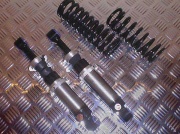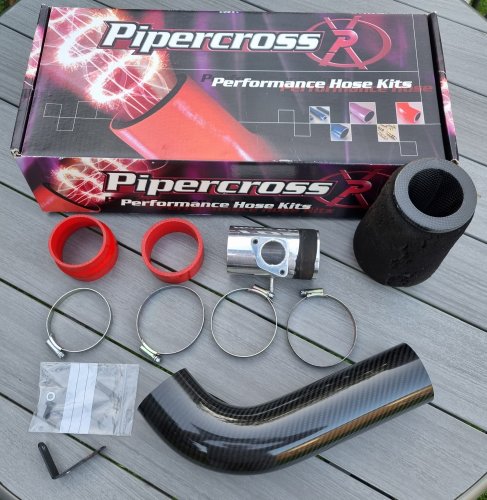Overview
There are numerous options of springs and dampers (commonly referred to as suspension options) available for Elises. Some of these are available from the factory (such as the red Konis fitted to std S1's, the yellow Lotus Sport Suspension dampers fitted on higher spec variants and the yellow Bilsteins fitted to S2's) and some are from specialist aftermarket manufacturers (e.g. Nitron, Spax, Gaz etc).
The spring and damper perform different operations; the spring is there predominantly to support the mass of the car whilst the damper resists movement - the faster the suspension moves the more the damper resists.
Most car damper units are single piece and unadjustable, thats to say that the settings are fixed. Obviously this is then a compromise between useage, e.g. smooth racetracks and potholed roads. Higher spec dampers offer adjustment via one or more knobs somewhere on the damper. The adjustments affect the bump and rebound characteristics of the unit. Bump is the resistance to movement as the damper is compressed, e.g. over bumps and racetrack kerbs, whilst rebound is the resistance to the damper uncompressing, usually after a bump. These settings are usually adjusted via knobs or screw adjusters somewhere on the damper. The number of adjusters depends on the type of damper; '1 way', '2 way', '3 way' etc.
- '1 way' units have a single adjuster that adjusts both bump and rebound together
- '2 way' units have individual adjusters for bump and rebound
- '3 way' units have individual adjusters for low speed bump movement (e.g. 'normal' road undulations), high speed bump movement (e.g. kerb strike etc) and rebound.
The more complex units units also come in a selection of appearences, with an extra cylinder either 'piggy backed' on the main unit or remotely mounted on a hose.
Finally, standard road dampers have fixed spring positions, whereas higher spec dampers have moveable platforms that allow rideheights to be adjusted.
1-way adjustable, single piece dampers with adjustable platforms are the most common choice in higher spec aftermarket dampers and a good cost/performance compromise for road and trackday use. The best combination of spring, damper (make and setting) and ride height depend on useage and driver preference, although there is a lot of advice to be had on the forums.
Bilsteins
Advantages
- 1 Relativly Cheap
- 2 Good Peformance for the Money
- 3 Good Ride Quality
- 4 Better than the OE fit Koni's
- 5 Can be set to adjust the ride height
- 6 Don't have to be declared as a Mod to insurance companies
Disadvantages
- 1 A bit soft for hardcore track work
- 2
- 3
Koni
Advantages
- 1
- 2
- 3
Disadvantages
- 1
- 2
- 3
Nitron
Advantages
- 1 Some of the best suspension you can get for the Elise
- 2
- 3
Disadvantages
- 1 Expensive
- 2
- 3
Ohlins
Advantages
- 1 Some of the best suspension you can get for the Elise
- 2
- 3
Disadvantages
- 1 Expensive
- 2
- 3
To get you started, here are a few settings to try (all counted from "full hard")...
Gentle road / wet: -24, -28 Motorway: -20, -25 Fast road (runs): -18, -22 Dry track cold: -13, -18 Dry track hot: - 8, -12 Wet track: -15, -18
... although obviously experiment with what suits your driving. In short, for slower & bumpier, the softer it has to be.
You can adjust the front-rear bias usefully (relative settings). For damp and/or gusty conditions, soften the front more and it increases "feel" and stability - in effect dialling in a fraction more understeer which is a good for safety in such conditions. Then harden the front for more neutral handling, in effect maximising rear grip for when you can be more brutal with the power through the back wheels.
Although there are allegedly 60 clicks on an Ohlins tube, forget about the softest 30 - it makes the car too bouncy.
Gaz
Advantages
- 1 Cheap
- 2
- 3
Disadvantages
- 1 Not good on Elises
- 2
- 3
Avo

AVO fully adjustable shock and spring kit, adjustable damping rate, adjustable ride height platforms.
Advantages
- 1 Cheap
- 2
- 3
<a name="Disadvantages_6" id="Disadvantages_6">
Disadvantages
- 1 Sound for a budget shock, standard road setting they are fine.
- 2 As the old adage goes, you get what you pay for
- 3
















Recommended Comments
There are no comments to display.
Join the conversation
You can post now and register later. If you have an account, sign in now to post with your account.